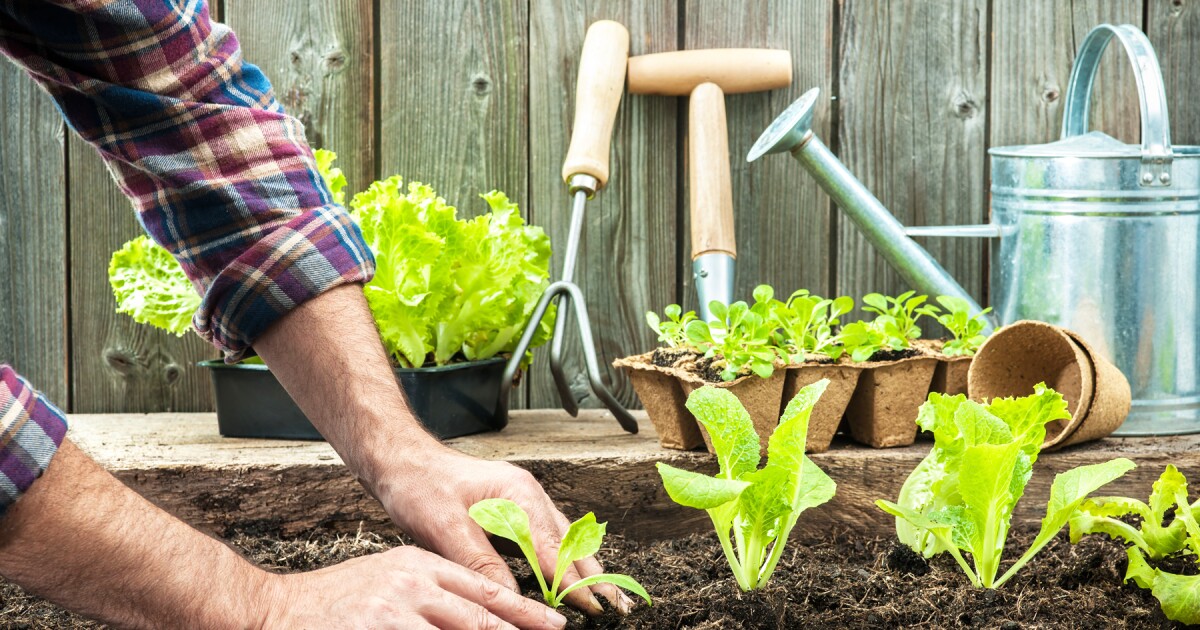Gardening: what is organic gardening? (Part 2 of 2)
There’s organic wine, organic dog food, organic hair color, and organic pumpkin spice latte flavored beer. It’s a very large biological world. And it gets bigger.
Organic gardening involves growing fruits, herbs and vegetables naturally without the use of synthetic (man-made) chemical fertilizers and pesticides. Gardening organically means working in harmony with natural systems, including the soil, water supply, people, and even some spooky insects.
I’m pretty sure it matches the harmonic waves of the universe and the astrological movement of the planetary systems. Far away, man. It looks radiant.
Clarence schmidt
(Courtesy photo)
Many home gardeners fall somewhere between conventional gardening and organic gardening. The transition from conventional to organic relies on compost, manure, mulch, crop rotation, companion planting, irrigation, biological pest control, soil improvement and beneficial insects.
Conventional gardening uses certain synthetic products.
Only organic matter (eg compost, manure, straw) is used to prepare and improve the soil. The idea is essentially to “feed the soil, not the plant”. Let nature do its job.
The emphasis is on preserving the environment by using only natural chemicals rather than manufactured ones. It is about maintaining the health of soils and plants in a way that does not have a negative impact on the environment.
Sadly, I have been found guilty of having a bad environmental impact by polluting every water trap, pond and stream on every golf course with my stray golf balls. I can find water in the desert.
Farmers and commercial growers have strict and complex federal regulations for organic horticulture. For home gardeners, organic gardening is a personal choice with far fewer restrictions.
The concept of “organic gardening” has been around for a long time before the invention of the wheel (3500 BC, according to the Smithsonian). However, the “organic movement” started in the early 1900s and has grown in popularity since the 1960s. Then the fun started.
The United States Department of Agriculture (USDA) has created government standards, laws, statutes, regulations, member boards, a marketing department, and “certified organic” labels.
The frequency of headaches and the sale of aspirin have skyrocketed.
The goals of organic gardening are primarily soil management, weed control, and pest control. And to obtain healthy products.
Starting an organic garden begins with testing the pH of the soil. This type of gardening uses nutrient replacement (compost) and no-till methods to maintain healthy soil. Raised beds make a much better organic garden than trying to replenish existing soil.
Most healthy or stale plants can actually be left in the ground over the winter. This will help keep the soil intact, provide food and habitat for beneficial birds and insects, and help prevent weeds from establishing themselves.
Weed often to minimize the battle for water, light, soil nutrients, and space. Weeds can act as hosts for disease and provide shelter for unwanted insects. Spread organic mulch like wood chips and straw.
Organic gardeners understand that insects and wildlife are all part of a natural system and therefore expect damage from pests. They can’t get all the pests out of their garden, so in most cases I’m happy to go.
To tackle the bad guys, gardeners recruit the good guys – beneficial insects and pest predators including ladybugs, spiders, birds, owls, snakes, lizards, frogs, and toads.
Geckos are also useful if they are not busy shooting commercials. Don’t forget our friends, the aardvarks, anteaters and armadillos, some of which can be difficult to collect locally.
Insects can be controlled by picking them by hand and throwing them over the fence. Or, use the messy method of just overwriting them. Hire the grandchildren.
Other control methods: use of floating covers, setting of sticky traps and application of insecticidal soaps, neem oil and the natural bacterium Bacillus thuringiensis. Just call it “Bt”.
Choose plant varieties that are resistant to pests and diseases that are suitable for your garden. Plant companion plants that deter pests. Rotate crops, stopping just before you feel dizzy. This interrupts the breeding cycles of pests.
If you are purchasing potting soil or a pest control product, look for the OMRI (Organic Materials Review Institute) approved label to indicate that it is safe for organic use.
It is difficult for sandy soil to hold nutrients, so add compost and natural fertilizers that contain fish emulsions, aged cattle manure, algae, worm casts, wood ash or agricultural lime. .
The potting soil usually contains peat or coir, perlite or vermiculite, and a pH balancing agent such as lime. It may also contain compost, manure or worm castings.
Water the plants in the morning. Pajamas are acceptable clothing. It tends to be cool with less winds, so there is less water lost through evaporation. Water the roots, not the foliage, using a drip system or soaking hose.
OK, snack time. Let’s see – all-natural cheddar beer chips or organic kale, pear and banana ice cream. And the winner is – the boneless watermelon!
Schmidt is a resident of Poway with over 40 years of gardening experience.

